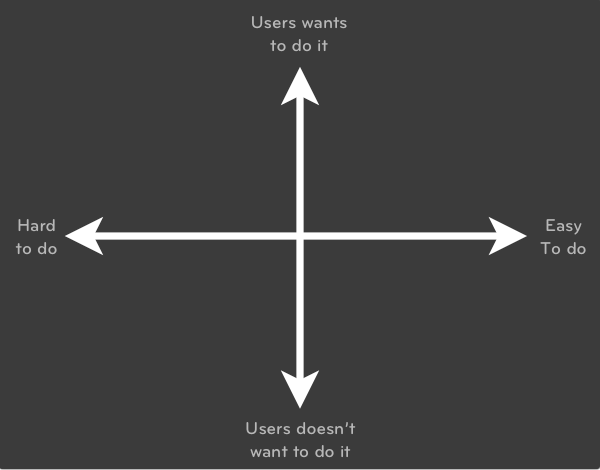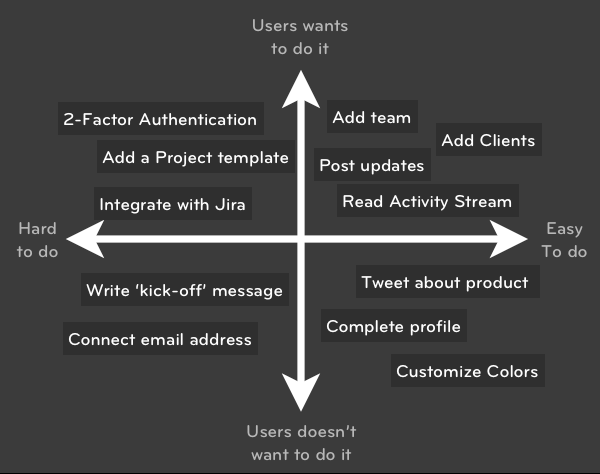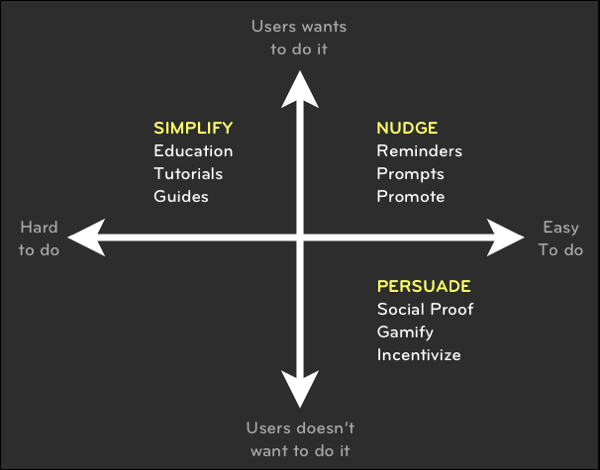How to Educate & Persuade Customers
- Fahad H

- Oct 23, 2013
- 3 min read
The most effective messages we see in Intercom either educate or persuade customers. Let’s talk about why they work.
If you want users to complete a certain task that is desirable to them but daunting, then education is the way you make it seem simple and easy. If a task is easy-to-do but of low value to users, then persuasion is how you get it done.
1. Understand where Simplicity Works
It’s important to know when each approach will work. Startup after start-up has ended up in the graveyard by simplifying something that no one ever actually wanted to do. Things like “Connect with other Weimaraner owners in your area”, “Upload photos of your teeth to Twitter”, “Back up your company’s Facebook timeline to your own S3 bucket”, or “Synchronise your shopping lists with your Facebook friends”.
Put bluntly, if it’s a terrible idea then it doesn’t matter how easy you make it. Conversely if it’s something that everyone has always done and wanted to do, and you take out some steps, you’re headed for billions. As an example, here are two generations of photo sharing that existed before Instagram:


Ev Williams has made a career out of removing steps, and spoke about it at this year’s XOXO festival:
“Here’s the formula if you want to build a billion-dollar internet company: Take a human desire, preferably one that has been around for a really long time… Identify that desire and use modern technology to take out steps.” — Ev Williams
Great user interfaces alone don’t simplify concepts though. For example, a project management tool can have a great interface, but that doesn’t make project management itself any easier. However, educating customers on best practices will make them better at their job and, in turn, simplify their day to day role.
In Intercom we aim to simplify concepts like drip-feed/life-cycle marketing by teaching our customers how to send effective messages and emails. This article itself is another example of our efforts.
2. Understand Your Problems

If your customers aren’t completing a certain step, then you need to understand why. Every user decision is a cost-benefit trade-off. How much does a user have to invest? What will they get in return?
Honest “growth-hacks” simply alter this trade-off so that the cost is decreased, or the perceived benefit is enhanced. In doing this they unlock new behaviour. Dishonest growth hacks follow the same school of thought as pickup artists and do one of the following:
Deceive the user by spamming their address book, auto-tweeting, or similar, without telling them.
Move the goalposts, for example forcing sign-up to watch a demo increases ‘sign-ups’, but unless asd@asd.com is your target market, then you’re only fooling yourself.
For any given task in your product you have to understand how much a user actually wants to do it, and how hard they find it when they attempt it. Until you understand the cost-benefit analysis you can’t target effective messages against them.
3. Plot out your problems

Plot your key features in the above quadrant so you can understand where your problems lie. The example above shows tasks from a fictitious project management tool.
4. Choose your approach

Depending on where a message lies, you’ll either want to:
Simplify the concept for your customers, so they feel they can take it on, e.g. “Become a master of project templates in just 3 minutes”.
Nudge your customers to remind them to do something, e.g. “You’ve yet to add a teammate, enter their address here”.
Persuade your customers to do something, by highlighting what’s in their interest, e.g. “We’ll give you 20% off your bill if you…”.
Before you ask—yes I’ve skipped a quadrant. The bottom left is a nightmare. A task that isn’t easy to do, and the user doesn’t want to do it. Brute force is often the only way. If you’ve ever been forced to register an account or install an app just to read an article, well, welcome to the bottom left 🙂 Pro tip: Don’t build a business that relies on users doing complex things that they don’t even want to do.
5. Send your messages
We’ve published plenty previously on effective messages, how to plan your app’s onboarding schedule, and how messages can convert your customers.
Key point: Before you start writing your message, decide if you’re trying to educate, persuade, or just nudge users towards a goal, and let that be the focus of your content.








Comments